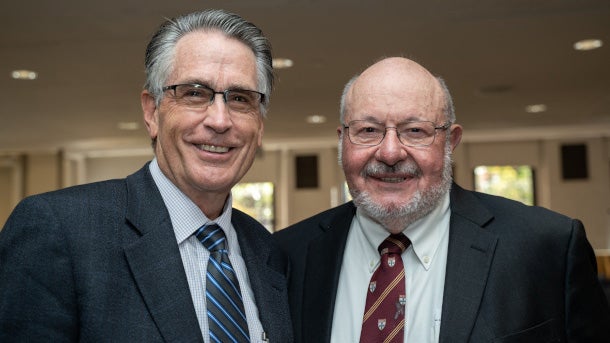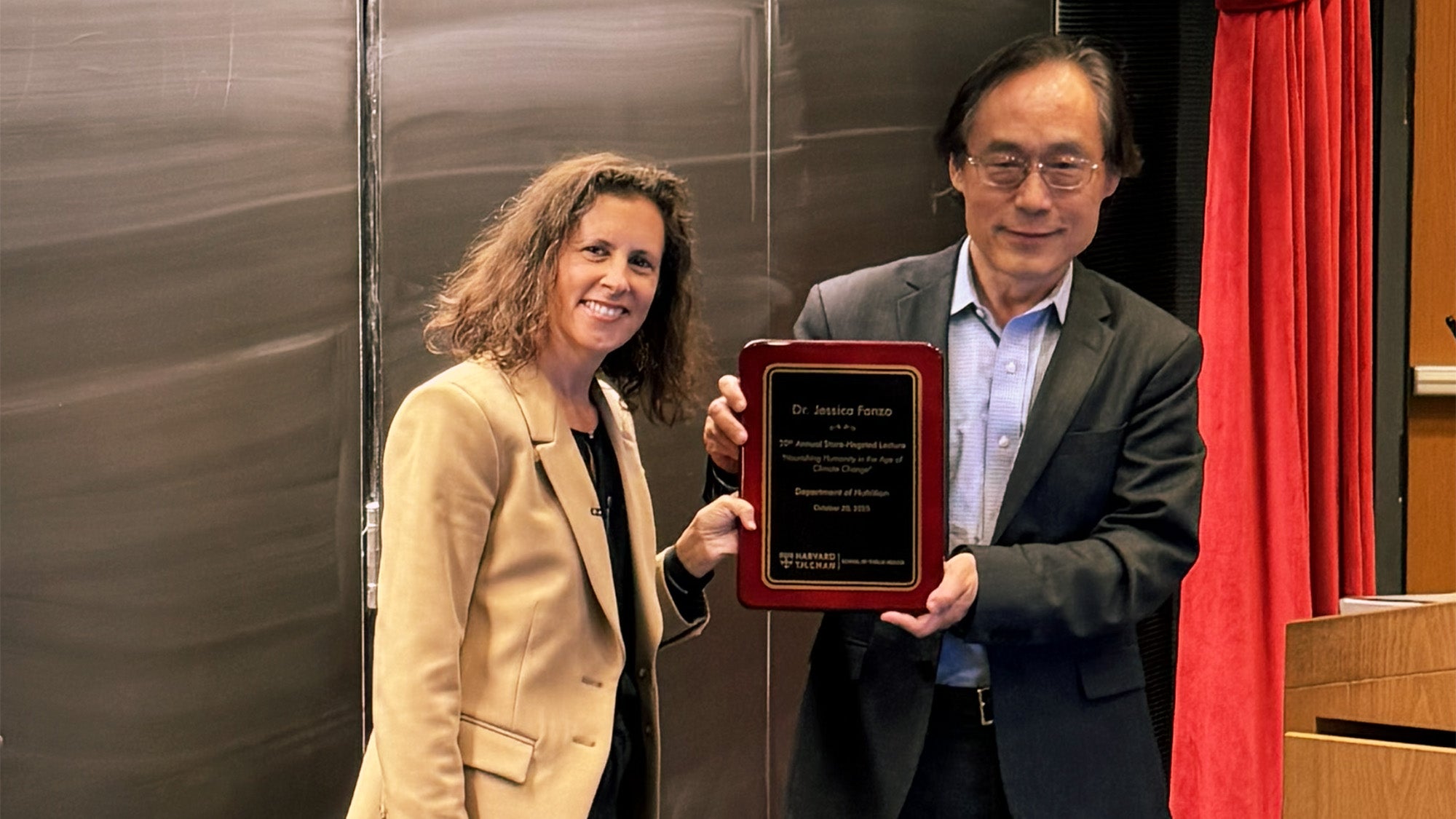Addressing the health threats posed by climate change

October 31, 2024 – Throughout the fall, Harvard Chan School faculty will share evidence-based recommendations on urgent public health issues facing the next U.S. administration. Renee Salas, affiliated faculty at the Center for Climate, Health, and the Global Environment at Harvard Chan School, is a member of the global Lancet Countdown, and she founded the Lancet Countdown U.S. Brief Working Group in 2018. Here, she discusses the health harms posed by climate change as well as policies that could help mitigate the threat.
Q: Why is climate change a pressing public health issue?
A: Climate change is driven primarily by the burning of fossil fuels. But the process of extracting and burning fossil fuels produces pollution that harms health through a variety of pathways. Because of drivers like income inequality and structural and systemic racism, these harms are felt disproportionately by frontline communities—often communities of color and low-income communities—and fenceline communities, which are those located near polluting facilities. One of the most studied parts of these extensive pollution pathways—which Harvard Chan School has been a leader in studying—is air pollution. Particulate air pollution, for example, has been shown to cause asthma in children and heart disease and death in adults.

On top of that, fossil fuels are driving climate change, which I think of as a “meta” problem—it underlies other problems and it makes existing problems worse. It has its fingerprints on everything. It’s causing new disease and exacerbating existing diseases and disparities. It’s disrupting our health care system, making it harder to provide high quality health care in hospitals and clinics, and straining already underfunded public health systems. And it’s doing that in many ways, including extreme heat, poor air quality from wildfires or ground-level ozone, impacts on the quality and quantity of food and water, supercharged storms, vector and waterborne illnesses, and societal disruptions—to name a few.
And climate change is driving not only hotter temperatures, but longer, more frequent, and more intense heat waves. Palm Springs, California, for example, hit an all-time high temperature of 124° F this year. Record heat this year caused heat-related illness and death, especially in the most vulnerable. And, as a recent example for storms, World Weather Attribution—an organization that scientifically looks for climate change’s fingerprints after extreme weather events—found that climate change was a key driver of Hurricanes Helene and Milton. Helene caused over 230 deaths during the event—a staggering amount—and my research team from Harvard Chan School has shown that, in Medicare beneficiaries, these large-scale events cause impacts and deaths long afterwards. Helene also caused widespread IV fluid shortages—including at my hospital, Massachusetts General Hospital—because a Marion, North Carolina production facility owned by Baxter International, the nation’s leading supplier, was damaged by flooding and forced to close.
Q: What are the biggest challenges facing the next administration around climate change?
A: One challenge is the concept of “pluralistic ignorance”—the idea that an individual or group believes that other people don’t want to address climate change. The United Nation’s Intergovernmental Panel on Climate Change, and even the U.S. Congress, have documented how vested interests want to slow or stop the transition away from fossil fuels. There are also headlines and discourse elevating the belief that we are polarized and fragmented as a country. Obviously there’s truth in that.
But there’s actually much more common ground than people realize. There’s a strong consensus from the majority of Americans to act on climate change. Even if there isn’t consensus about what causes it, there is consensus on solutions. For example, the Yale climate communications group found in 2023 that, in Wyoming, only 45% of people think climate change is caused by humans. But 74% want to fund renewable energy research and 68% want to expand renewable energy on public lands.
A second challenge is the need for multi-sectoral solutions at a scale and speed that we’ve never done. We currently have a siloed and fragmented response to climate change. The federal government has started to tackle that. For example, the federal interagency National Integrated Heat Health Information System (NIHHIS) recently released a national heat strategy for 2024-30, and it leveraged resources across 29 different federal departments and agencies.
Q: What are your top two or three recommendations for policies that might address climate change?
A: Three overarching recommendations for the incoming administration are included in the companion U.S. Policy Brief to the 2024 report from the Lancet Countdown on health and climate change, a global research entity that produces annual indicators that track threats and opportunities for climate change and health. A key theme in this Brief is that it’s crucial to elevate community expertise in a just transition, including in the form of community-led initiatives and meaningful partnerships, to provide leadership and power to those disproportionately harmed by climate change.
Recommendations include:
Rapidly reduce fossil fuel production and use while accelerating the transition to clean, non-combustion renewable energy to improve health and health equity. Ideas in this recommendation include accelerating electrification, reducing methane emissions, and investing in equitable active transportation like walking and biking and in zero-emission public transportation like electric buses or trains; ending new commitments to fossil fuel extraction; and phasing out fossil fuel investments and subsidies.
Build resilient, adaptable communities and support public health to protect people from climate impacts. Specific recommendations include: Recognize health system vulnerabilities and invest in readiness and resilience; invest in strong public health systems and support public health readiness for climate change; and leverage infrastructure and built environment investments to maximize community health and resilience.
Build U.S. global leadership through scaling up global investments and support for climate and health actions. Some background: Financing is vital to achieving global climate action goals. High-income countries committed in 2009, at the 15th United Nations Climate Conference (COP15) in Copenhagen, to provide $100 billion per year to support low- and middle-income countries. Countries will lay the foundation for scaling this up at the upcoming COP29 in Azerbaijan, which is being dubbed the “Finance COP”. The U.S. committed to more than $11 billion by 2024—but that falls short of what’s needed. Therefore, this recommendation includes three parts. One is to expand U.S. contributions to global climate finance in line with need and the scale of investments in other global challenges. A second is to retool global climate, health, and development investments to ensure that they also advance interconnected climate, health, and equity goals. A third is to enable greater investment in health and social systems by supporting changes to the global financial architecture—including debt structures that place a heavy burden on low- and middle-income communities that are already suffering the greatest harms from climate change.
Q: What’s the evidence supporting those recommendations?
A: In the eight years of the Lancet Countdown’s monitoring, this new report reveals the most concerning findings to date. For instance, of 15 indicators that monitor hazards, exposures, and impacts, 10 reached record highs. One record high for the U.S. included $103 billion in potential loss of income from reduced labor capacity due to heat. In addition, each infant and each adult aged 65 or older in the U.S.—both populations especially vulnerable to heat—were exposed to more than double the number of heatwave days from 2014-2023 compared with 1986-2005.
Other indicators show that the U.S. remains the world’s second largest contributor of greenhouse gas emissions, and fossil fuels continue to account for the majority of U.S. electricity. The most recent data shows that fossil fuels accounted for 39% of U.S. deaths linked to particulate air pollution. On the plus side, the brief cited research showing the health benefits of renewable energy, such as a 2024 study that linked wind and solar power generation in the U.S. to roughly 1,200 to 1,600 fewer premature deaths in 2022.
Q: What do you hope can be accomplished in the climate change arena in the next four years?
A: First I’d like to note the significant steps that the current administration has taken over the past four years. It passed the Inflation Reduction Act, which laid the groundwork for the largest climate investment in U.S. history. This was accompanied by other climate action through the Bipartisan Infrastructure Law and the CHIPS and Science Act. The EPA advanced regulations on fossil fuel pollution. And, in fact, in 2023 our greenhouse gas emissions declined while our national economy grew. These actions show what can be done.
But these need to be just the first dominos to fall in a long line of transformative actions that could occur in the next four years. If we are centering health and equity —and using these as the metrics of success—then we need to accelerate our transition away from fossil fuels with even greater scale and speed.
I’m an emergency medicine physician, and when a patient is crashing, we respond in multiple ways to save that patient’s life. I believe we can achieve everything that has been set out in the Lancet Countdown recommendations so that we can protect the health of our patients and communities, while also meeting the U.S. commitment to the Paris Agreement. The time is now.


